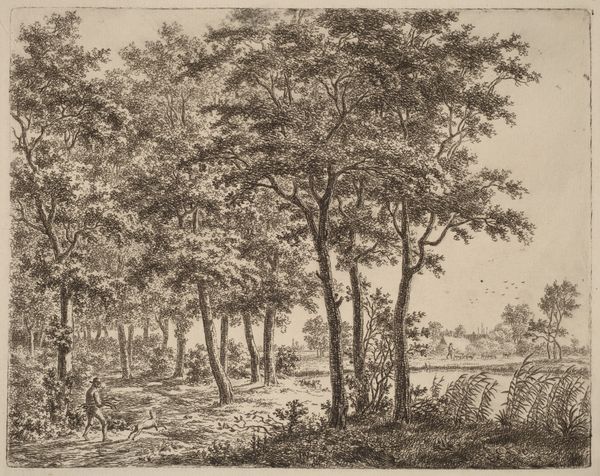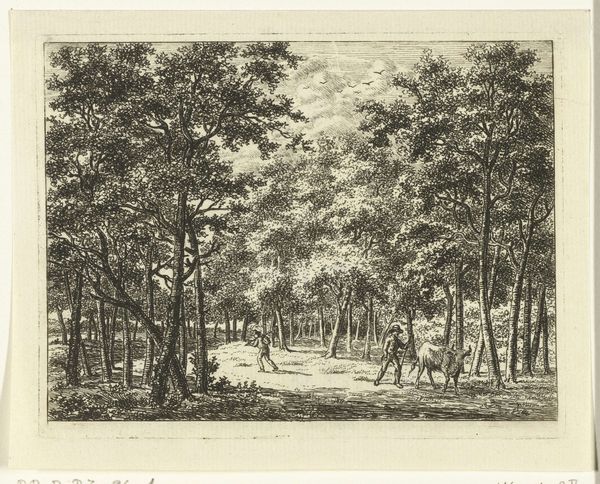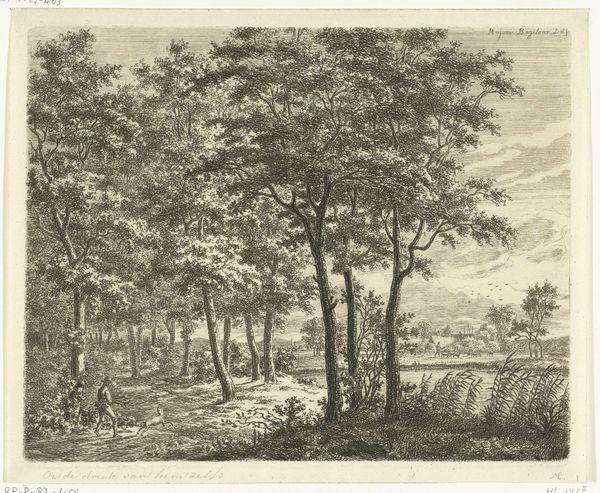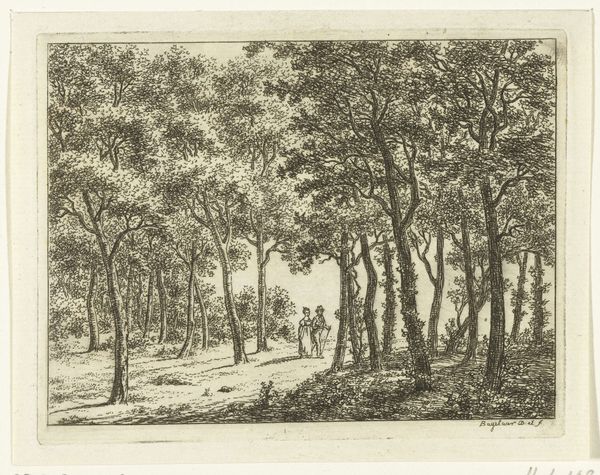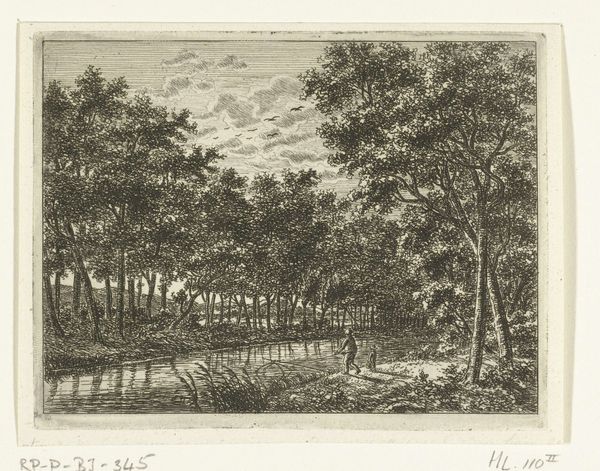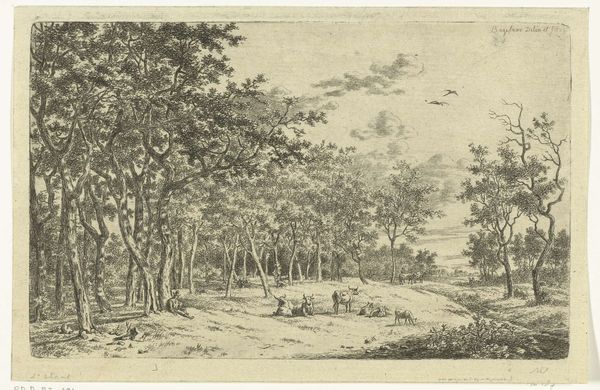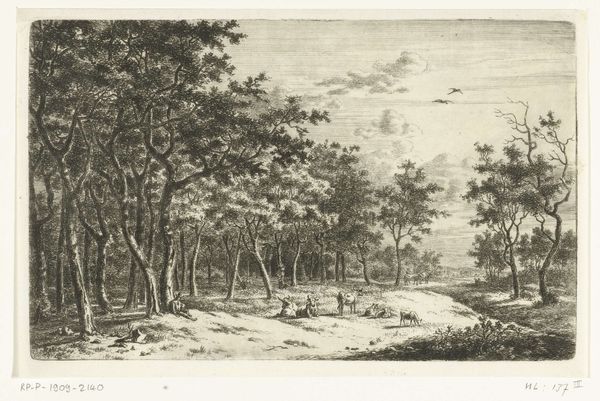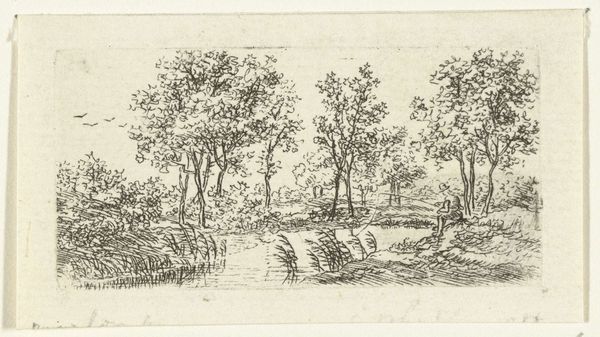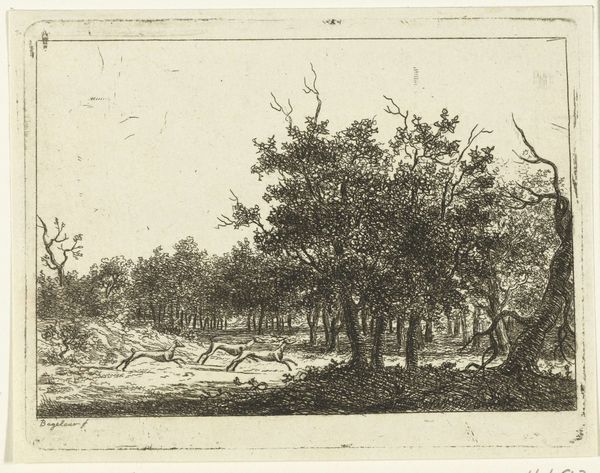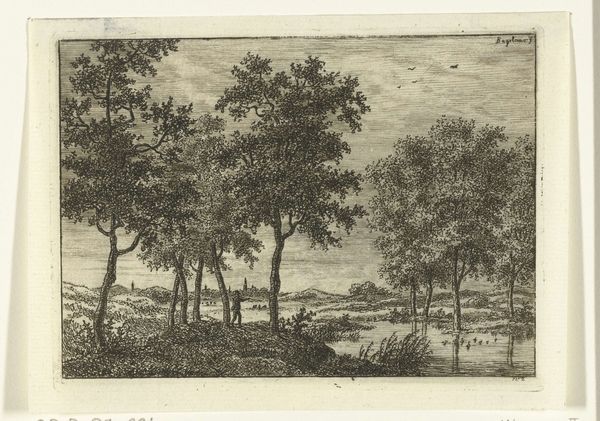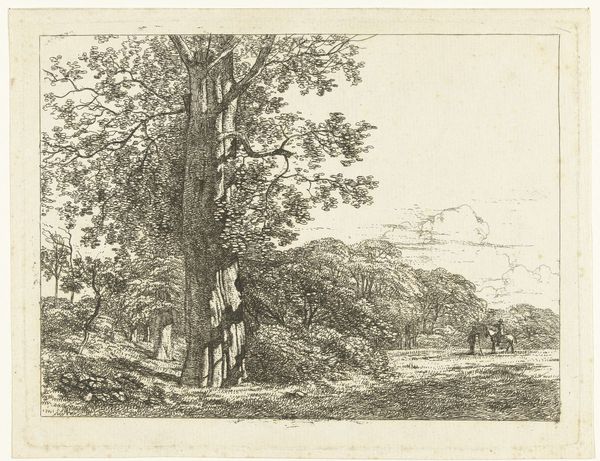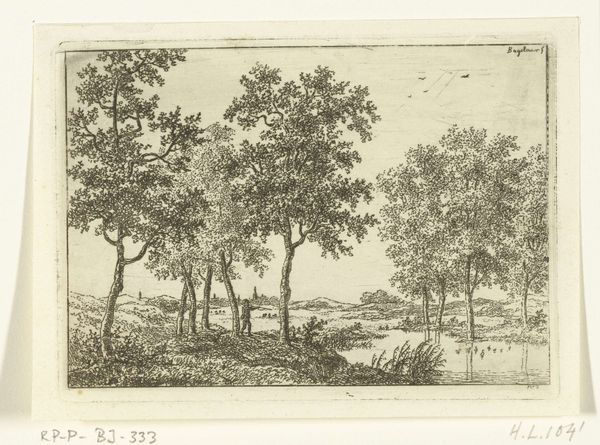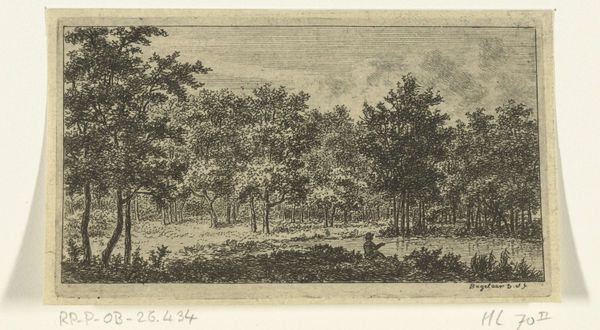
drawing, paper, ink
#
landscape illustration sketch
#
drawing
#
pen drawing
#
mechanical pen drawing
#
pen illustration
#
pen sketch
#
landscape
#
paper
#
ink line art
#
ink
#
pen-ink sketch
#
thin linework
#
pen work
#
sketchbook drawing
#
genre-painting
Dimensions: height 95 mm, width 122 mm
Copyright: Rijks Museum: Open Domain
Editor: This is Ernst Willem Jan Bagelaar's "River Landscape with Fisherman and Boy," created sometime between 1798 and 1837, using ink on paper. I find its quiet, detailed depiction of everyday life very charming. What do you see in this piece? Curator: Beyond the initial charm, this piece offers a glimpse into the societal structures of the time. How does the relationship between the fisherman and the boy reflect the prevailing notions of labour and education during this period? Consider, too, the natural setting. Landscape art often served as a tool for nation-building, reinforcing ideas about national identity. Editor: That's interesting! So, the act of portraying a serene, accessible landscape becomes a way of asserting ownership or belonging? Curator: Precisely! And notice who is absent. Where are the women? Whose labour and lives are rendered invisible in this idyllic scene? Art is never neutral; it always speaks from a particular position, even in ostensibly apolitical genres like landscape. Think about how this representation may have shaped or reinforced existing power dynamics. Editor: That really shifts my perspective. I hadn't considered the absences, only what was visibly there. Does this relate to feminist art theory at all? Curator: Absolutely! Feminist art theory critically examines how women have been historically represented and often marginalized in art. Looking at this landscape, we can ask: Whose perspective is privileged? Whose experiences are deemed less worthy of representation? This opens up richer and more critical dialogue. Editor: I never thought a simple drawing of a landscape could have so much to say about society! It’s a lot to consider. Thank you for your insights! Curator: It’s all about learning to ask the right questions, seeing beyond the surface. Now, imagine this scene re-envisioned through a different lens, one that centers previously silenced voices… what would that landscape look like?
Comments
No comments
Be the first to comment and join the conversation on the ultimate creative platform.
